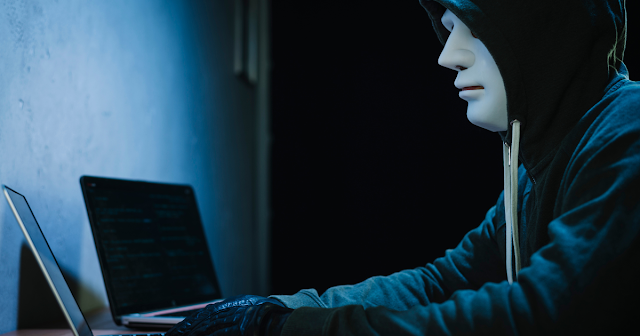Safeguarding Your Digital Identity: Crucial Steps to Prevent Becoming a Victim of Cyberattack in India
In the digital age, safeguarding your online presence has become more crucial than ever. With the rise in cyberattacks and data breaches, it’s imperative to take proactive steps to protect your digital identity. This is especially pertinent in India, where a significant portion of the population is increasingly at risk. In this blog, we’ll explore essential strategies for protecting yourself from cyber threats and ensuring your online security.
Understanding the Cyber Threat Landscape
India has seen a surge in cyberattacks in recent years, affecting individuals and organizations alike. The increasing reliance on digital platforms for banking, communication, and commerce has made personal data a lucrative target for cybercriminals. From phishing scams and ransomware attacks to identity theft and financial fraud, the variety of cyber threats is vast and constantly evolving.
The Importance of Digital Identity Protection
Your digital identity comprises all the information about you available online, including personal data, financial details, and social media activities. Protecting this identity is crucial because cybercriminals can exploit it for various malicious purposes, such as stealing money, committing fraud, or launching further attacks. A compromised digital identity can lead to significant financial loss, reputational damage, and emotional distress.
Crucial Steps to Safeguard Your Digital Identity
Strengthen Your Passwords
One of the simplest yet most effective ways to protect your digital identity is to use strong, unique passwords for each of your online accounts. Avoid using easily guessable passwords such as “password123” or “123456.” Instead, create complex passwords that combine uppercase and lowercase letters, numbers, and special characters. Consider using a reputable password manager to generate and store your passwords securely.
Enable Two-Factor Authentication (2FA)
Two-factor authentication adds an extra layer of security to your online accounts by requiring a second form of verification in addition to your password. This could be a code sent to your mobile device, a fingerprint scan, or a facial recognition check. Enabling 2FA significantly reduces the risk of unauthorized access, even if your password is compromised.
Be Wary of Phishing Scams
Phishing attacks involve cybercriminals sending deceptive emails or messages that appear to be from legitimate sources, tricking you into revealing personal information or clicking on malicious links. To avoid falling victim to phishing scams, always verify the sender’s identity before responding to emails or messages, and avoid clicking on suspicious links. Look for red flags such as misspelled email addresses, urgent language, and unsolicited attachments.
Update Your Software Regularly
Keeping your software and devices up to date is crucial for protecting against security vulnerabilities. Cybercriminals often exploit outdated software to gain access to systems and data. Enable automatic updates for your operating system, applications, and antivirus software to ensure you have the latest security patches and features.
Use a Virtual Private Network (VPN)
A VPN encrypts your internet connection, making it more difficult for cybercriminals to intercept your data. This is especially important when using public Wi-Fi networks, which are often less secure. Choose a reputable VPN service and use it whenever you connect to the internet, particularly on public networks.
Secure Your Mobile Devices
Mobile devices are increasingly targeted by cybercriminals due to their widespread use and the vast amount of personal information they contain. Protect your mobile devices by setting strong passwords or biometric locks, enabling remote wipe capabilities, and installing security apps that can detect and prevent malware.
Be Cautious with Social Media
Social media platforms are a common source of personal information that cybercriminals can exploit. Review your privacy settings regularly to control who can see your posts and personal details. Avoid sharing sensitive information such as your home address, phone number, or financial details. Be cautious when accepting friend requests or interacting with unknown individuals.
Monitor Your Financial Accounts
Regularly monitoring your bank statements and credit reports can help you detect suspicious activities early. Report any unauthorized transactions to your bank immediately. Consider setting up alerts for significant transactions to receive real-time notifications of any unusual activity.
Educate Yourself and Stay Informed
Cybersecurity is an ever-evolving field, and staying informed about the latest threats and protection strategies is essential. Follow reputable cybersecurity blogs, news outlets, and organizations to keep up with the latest developments. Participate in cybersecurity awareness programs and consider taking courses to enhance your knowledge.
Backup Your Data
Regularly backing up your data ensures that you can recover your information in the event of a cyberattack, such as ransomware. Use both cloud-based and physical backup solutions to protect your data. Ensure your backups are encrypted and stored securely.
The Role of Cybersecurity Solutions
In addition to personal vigilance, utilizing cybersecurity solutions can provide an added layer of protection. Anti-virus software, firewalls, and intrusion detection systems can help identify and mitigate threats. For businesses and individuals with more complex security needs, consulting with cybersecurity experts and implementing advanced security measures can be highly beneficial.
Conclusion
Protecting your digital identity is a critical aspect of modern life, particularly in India, where the risk of cyberattacks is on the rise. By implementing these crucial steps, you can significantly reduce your vulnerability and ensure a safer online experience. Remember, cybersecurity is not a one-time effort but an ongoing process that requires continuous attention and adaptation. Stay vigilant, stay informed, and take proactive measures to safeguard your digital identity.


Comments
Post a Comment